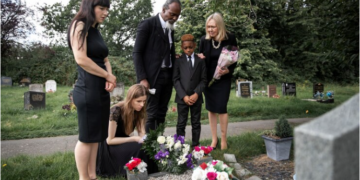In today’s interconnected world, businesses operate in increasingly diverse and globalized environments. As a result, the conference table has become a melting pot of cultures, with teams comprised of individuals from different countries, backgrounds, and perspectives coming together to collaborate and make decisions. However, navigating cross-cultural dynamics at the conference table presents unique challenges and opportunities for organizations seeking to harness the full potential of their diverse teams. In this article, we explore the importance of understanding cross-cultural dynamics and share insights on how organizations can foster collaboration and innovation in multicultural settings.
Embracing Diversity:
Embracing diversity is the first step towards unlocking the benefits of cross-cultural collaboration at the conference table. Diversity encompasses not only differences in race, ethnicity, and nationality but also differences in language, religion, values, and communication styles conference table. By embracing diversity and recognizing the unique perspectives and experiences that each individual brings to the table, organizations can create a culture of inclusivity and respect, laying the foundation for effective cross-cultural collaboration.
Cultural Intelligence:
Cultural intelligence, or the ability to understand and navigate cultural differences effectively, is essential for success in today’s globalized business environment. At the conference table, individuals with high cultural intelligence can adapt their communication and behavior to accommodate cultural differences, build rapport with colleagues from diverse backgrounds, and bridge cultural divides. By developing cultural intelligence through training, education, and exposure to different cultures, organizations can equip their teams with the skills they need to thrive in multicultural settings.
Communication Styles:
Communication styles vary widely across cultures, with some cultures placing a greater emphasis on direct communication and others valuing indirect communication. At the conference table, it is essential to be aware of these differences and adapt one’s communication style accordingly. For example, individuals from cultures that value indirect communication may be more likely to use euphemisms or gestures to convey their message, while those from cultures that value direct communication may prefer to be more explicit and straightforward. By understanding and respecting these differences, teams can avoid misunderstandings and foster more effective communication.
Hierarchy and Decision-Making:
Cultural differences in hierarchy and decision-making styles can also impact dynamics at the conference table. In some cultures, decision-making is centralized, with authority residing at the top of the hierarchy, while in others, decision-making is more decentralized, with input sought from multiple stakeholders. At the conference table, it is essential to be mindful of these differences and adapt decision-making processes accordingly. For example, in hierarchical cultures, decisions may be made by senior leaders, while in more egalitarian cultures, decisions may be made collaboratively by the team. By understanding and respecting these differences, teams can ensure that everyone has a voice and that decisions are made in a way that is inclusive and culturally sensitive.
Conflict Resolution:
Cultural differences in conflict resolution styles can also impact dynamics at the conference table. In some cultures, conflict is seen as a natural part of the decision-making process and is addressed openly and directly, while in others, conflict is avoided or managed indirectly to preserve harmony and face. At the conference table, it is essential to be aware of these differences and adapt conflict resolution strategies accordingly. By fostering a culture of open communication, respect, and empathy, organizations can create an environment where conflicts are addressed constructively, leading to better outcomes and stronger relationships.
Building Trust:
Trust is essential for effective collaboration at the conference table, but it can be challenging to establish in multicultural settings where cultural differences may impact perceptions of trustworthiness. Building trust requires time, effort, and consistency, as well as a willingness to understand and respect cultural differences. At the conference table, leaders can foster trust by leading by example, demonstrating integrity, and creating opportunities for open dialogue and collaboration. By building trust across cultural divides, teams can work together more effectively, leading to better outcomes and increased satisfaction.
Cross-Cultural Training:
Cross-cultural training is an invaluable resource for organizations seeking to navigate cross-cultural dynamics at the conference table. Cross-cultural training programs provide individuals with the knowledge, skills, and tools they need to understand and navigate cultural differences effectively. These programs may cover topics such as cultural values and norms, communication styles, conflict resolution strategies, and decision-making processes. By investing in cross-cultural training, organizations can equip their teams with the skills they need to succeed in multicultural settings, leading to more effective collaboration and better business outcomes.
Diversity in Leadership:
Diversity in leadership is essential for driving cross-cultural collaboration and innovation at the conference table. When leadership teams reflect the diversity of the workforce, they bring a broader range of perspectives, experiences, and insights to the table, enabling them to make more informed decisions and drive innovation. By promoting diversity in leadership and creating opportunities for individuals from underrepresented backgrounds to advance into leadership roles, organizations can foster a culture of inclusivity and respect, leading to stronger collaboration and better business outcomes.
Celebrating Cultural Differences:
Finally, organizations can foster cross-cultural collaboration at the conference table by celebrating cultural differences and promoting a culture of curiosity and learning. By encouraging individuals to share their cultural traditions, customs, and perspectives, organizations can create opportunities for cross-cultural exchange and enrichment office partitions pro. Celebrating cultural differences not only fosters a sense of belonging and inclusivity but also encourages creativity, innovation, and collaboration, leading to better business outcomes and a more vibrant organizational culture.
Conclusion:
Cross-cultural dynamics at the conference table present both challenges and opportunities for organizations seeking to thrive in today’s globalized business environment. By embracing diversity, developing cultural intelligence, adapting communication styles, and fostering trust and collaboration, organizations can harness the full potential of their diverse teams and drive innovation and success in multicultural settings. As organizations continue to navigate the complexities of cross-cultural collaboration, it is essential to recognize the value of diversity and inclusivity and to create environments where all individuals feel valued, respected, and empowered to contribute their unique perspectives and talents.






































































